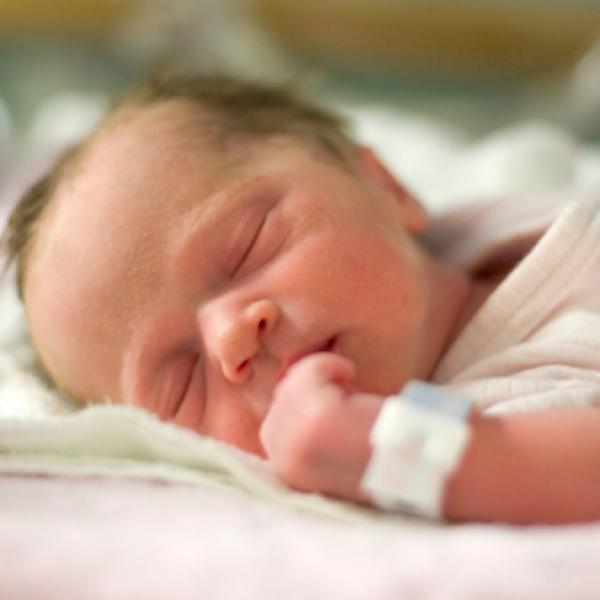What is retinopathy of prematurity?
Retinopathy of prematurity (ROP) is an eye disease that can happen in babies who are premature (born early) — or who weigh less than 3 pounds at birth.
ROP happens when abnormal blood vessels grow in the retina (the light-sensitive layer of tissue in the back of your eye). Some babies with ROP have mild cases and get better without treatment. But some babies need treatment to protect their vision and prevent blindness.
What are the stages of ROP?
There are 5 different stages of ROP. Doctors use these stages to keep track of how serious ROP is. The stages range from stage 1 (mild) to stage 5 (severe):
- Stages 1 and 2 — Babies in these stages usually get better without treatment and go on to have healthy vision. Doctors will watch babies carefully to see if their ROP gets worse.
- Stage 3 — Some babies who develop stage 3 get better with no treatment and go on to have healthy vision. But others need treatment to stop abnormal blood vessels from damaging the retina and causing retinal detachment (an eye problem that can cause vision loss).
- Stage 4 — Babies in stage 4 have partially detached retinas and need treatment.
- Stage 5 — In stage 5, the retina detaches completely. Even with treatment, babies in stage 5 may have vision loss or blindness.
Both stages 4 and 5 are very serious. Babies in these stages often need surgery — but even with treatment, they may have vision loss. That’s why doctors usually start treatment in stage 3.
It’s also possible for babies in any stage to get worse quickly and need treatment. That’s why it’s so important to make sure your baby gets their follow-up exams on schedule. Finding and treating ROP early is the best way to lower the chances it will cause serious problems.
What are the symptoms of ROP?
There are no signs of ROP that you can see. In advanced cases of ROP, the retina may partially or completely pull away from its normal position at the back of the eye. This is called retinal detachment — and it can cause vision loss and blindness.
If your baby had ROP that caused damage, you may later notice that:
- Their eyes wander, shake, or make other unusual movements
- Their eyes don’t follow objects
- Their pupils look white
- They have trouble recognizing faces
Babies who had ROP are also more likely to have other eye problems as they get older, including:
If your child had ROP when they were younger, it’s important to make sure they get regular checkups and eye exams. Finding and treating eye problems early will help protect your child’s vision as they get older.
Is my baby at risk for ROP?
Babies are at risk for ROP if they’re born before 30 weeks of pregnancy or weigh less than about 3 pounds at birth. If your baby is at risk, an eye specialist will check them for ROP.
Babies are also more likely to develop ROP if they have:
- Breathing problems (and if they get too much oxygen therapy to treat breathing problems)
- Infections or other medical problems that premature babies may have — like problems with their heart, lungs, or brain
What causes ROP?
Normally, the blood vessels of the retina start to develop in the fourth month of pregnancy and finish developing around the due date, or 9 months of pregnancy.
If a baby is born very early, these blood vessels may stop developing normally. The retina then develops new blood vessels that are abnormal. This is called retinal neovascularization, or NV.
These abnormal blood vessels can grow in the wrong direction. The blood vessels are attached to the retina — so if they grow too far in the wrong direction, they can pull the retina up off the back of the eye. This is a type of retinal detachment.
How will my baby’s doctor check for ROP?
If your baby is at risk for ROP, they’ll need a dilated eye exam a few weeks after they’re born — usually between 4 to 9 weeks after birth. Ask your doctor when your baby needs an eye exam before you leave the hospital.
During the exam, the eye doctor will give your baby some eye drops to dilate (widen) their pupils. The doctor will check every part of your baby’s eye for problems — especially the retina.
The eye doctor will decide if your baby needs a follow-up exam based on what they see during the first exam. If your baby needs follow-up care, the doctor will check their eyes again every 1 to 3 weeks until they aren’t worried about the risk for retinal detachment.
It’s important to get your baby’s follow-up exams on schedule. That way, the doctor can catch ROP in an early stage and start your baby’s treatment.
What's the treatment for ROP?
Many babies with ROP have mild cases and get better without treatment. But some babies need treatment to keep ROP from getting worse. It’s important to get treated early to protect your child’s vision. Treatment options include:
-

Laser treatment. Babies with advanced ROP may need laser treatment on the sides of the retina. This treatment can help keep ROP from getting worse and help protect your child’s vision.
-

Injections. Doctors can also inject medicines called anti-VEGF drugs into your baby’s eye. These medicines work by blocking the growth of blood vessels.
-

Eye surgery. There are 2 types of retina surgery for babies with partially or completely detached retinas (stages 4 or 5):
- Scleral buckle surgery. The doctor places a flexible band around the sclera (the white part of the eye). The band supports the detached retina until the eye starts growing normally, then the doctor removes it.
- Vitrectomy. The doctor makes small openings in the eye wall to remove most of the vitreous (the gel-like fluid that fills the eye) and replace it with saline solution. The doctor then removes the scar tissue on the retina. They may also do laser treatment to treat the retina and seal it in position.
The goal of ROP surgery is to keep ROP from getting worse and prevent blindness. Even with surgery, some babies with ROP will still have vision loss or blindness.
What’s the latest research on ROP?
NEI supports research on new ways to diagnose and treat ROP. NEI has also funded research on risk factors for ROP.
